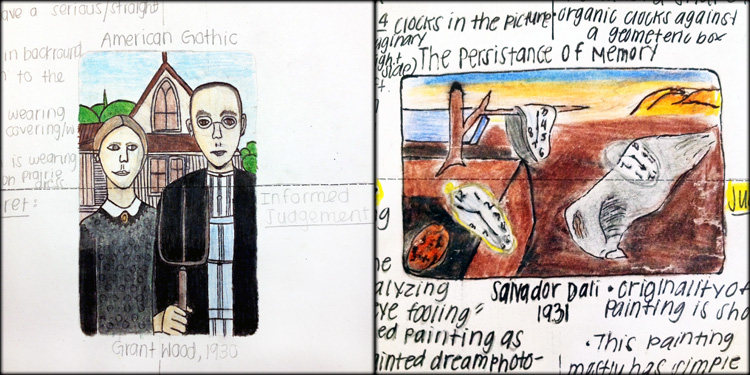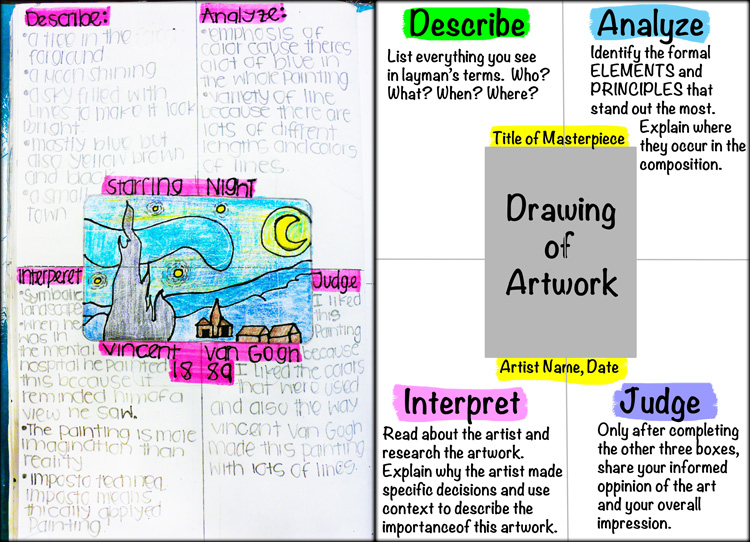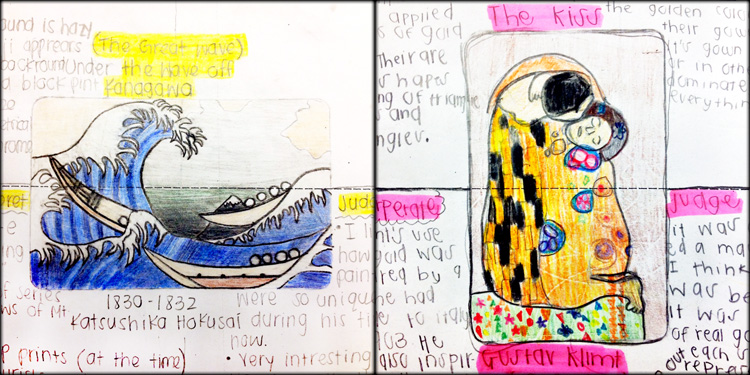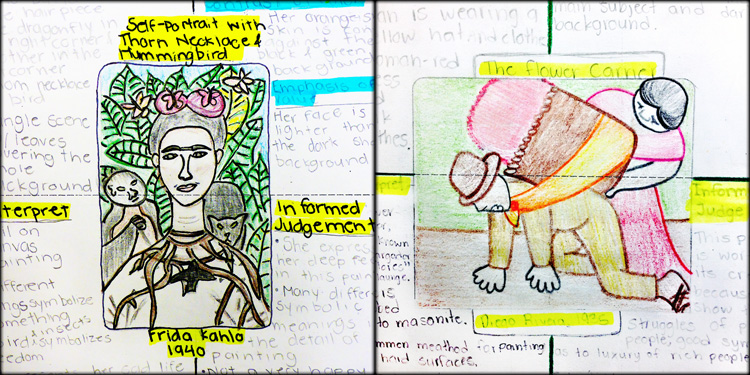Inspired by Masters

While making and creating original Artwork is the main focus of my instruction, students also gain important skills through the study of Art History, criticism, and analysis. I’m careful to embed these connections and critical thinking elements within every project, but for this particular assignment they were the main focus.

Students worked in groups to complete a graphic organizer (above) that helped them navigate through the steps of Feldman’s Model of Art Criticism. Students’ understanding was evaluated on the level to which they completed the graphic organizer in their sketchbooks, and their ability to explain it to the class during a final group presentation.

I designed this project to accomplish one Student Learning Objective (SLO), a component of the new Educator Effectiveness System (EES) required by Hawaii’s Department of Education this year. Multifaceted and demanding components of the EES system were rolled out during this “practice” year. Unfortunately, this new expectation lacked the necessary structure, models and training to support success. As a result, many teachers were overwhelmed, frustrated, and discouraged. I am attaching all of my planning documents, rubrics and results (excluding any confidential information), in the hopes that it will help other teachers accomplish their goals (see the links at the end of this post).

A Student Learning Objective (SLO) is a broad overarching goal that embodies the core of instruction. Student achievement is measured by individual growth toward understanding and mastering the SLO. Hawaii teachers were required to design and implement two SLOs this year. My first SLO may appear simple, but requires a solid understanding of the fundamental principles of Art: “Students will apply an understanding of the Elements and Principles of Design when interpreting, evaluating, and/or creating Art.” Click the links below for documents.
SLO
RUBRIC
BASELINE DATA & ASSESSMENT CHART
CORE PROFESSIONALISM




